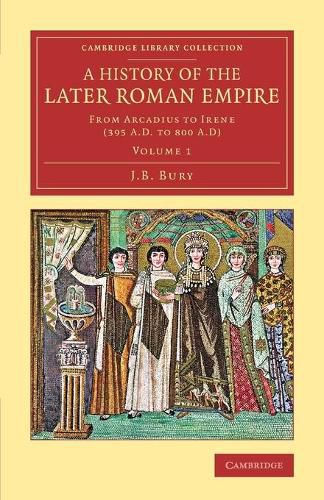Readings Newsletter
Become a Readings Member to make your shopping experience even easier.
Sign in or sign up for free!
You’re not far away from qualifying for FREE standard shipping within Australia
You’ve qualified for FREE standard shipping within Australia
The cart is loading…






The classical historian J. B. Bury (1861-1927) was the author of a history of Greece which was a standard textbook for over a century. He also wrote on later periods, and, in this two-volume work of 1889, examines Byzantine history from 395 to 800. Arguing for the underlying continuity of the Roman empire from the time of Augustus until 1453, Bury nevertheless begins his account in the year in which, on the death of Theodosius I, the empire was divided into eastern and western parts, and Constantinople began to take on the metropolitan role formerly held by Rome. Broadly chronological, but with an extended section on the state of the empire at the end of the fourth century, Volume 1 covers the period to the deaths of Belisarius and Justinian in 565, examining the decline of paganism, the inroads of ‘barbarians’, and the cultural milieu of the early Byzantine empire.
$9.00 standard shipping within Australia
FREE standard shipping within Australia for orders over $100.00
Express & International shipping calculated at checkout
The classical historian J. B. Bury (1861-1927) was the author of a history of Greece which was a standard textbook for over a century. He also wrote on later periods, and, in this two-volume work of 1889, examines Byzantine history from 395 to 800. Arguing for the underlying continuity of the Roman empire from the time of Augustus until 1453, Bury nevertheless begins his account in the year in which, on the death of Theodosius I, the empire was divided into eastern and western parts, and Constantinople began to take on the metropolitan role formerly held by Rome. Broadly chronological, but with an extended section on the state of the empire at the end of the fourth century, Volume 1 covers the period to the deaths of Belisarius and Justinian in 565, examining the decline of paganism, the inroads of ‘barbarians’, and the cultural milieu of the early Byzantine empire.